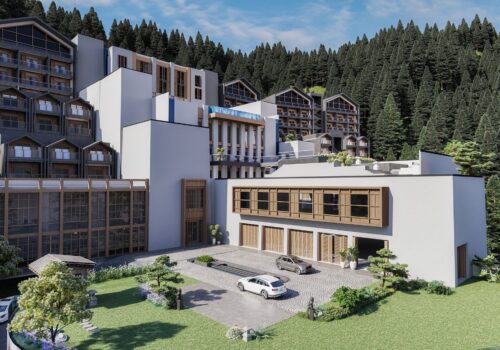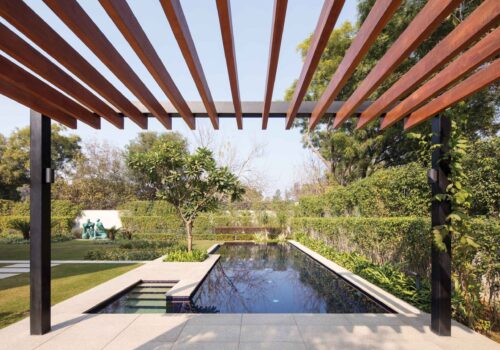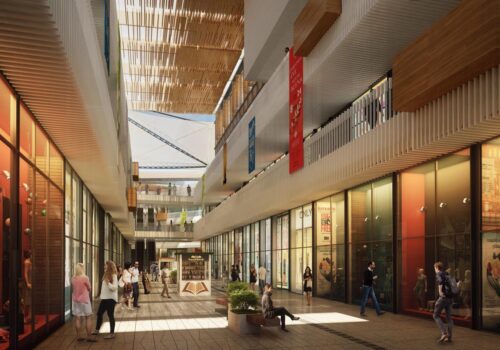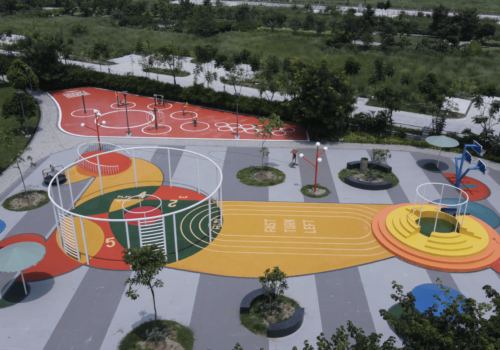How Conscious Design Can Mitigate Urban Heat
Our city centres experience temperatures a few degrees higher than surrounding areas. In an attempt to keep our interiors cool and comfortable, are we neglecting the effect of our construction on surrounding temperatures?
When designing in the Indian context, we need to be all the more conscious of tempering our designs to suit our climate, and there are several ways in which this can be done.
Orienting the building based on heat gain analysis
Building orientation is one of the most vital aspects affecting heat gain. Studying the sun path and optimising the placement of built mass can work drastically to maintain comfortable temperatures within and around the building.
At Panorama, a commercial complex in Gurgaon, the orientation and massing of the building is arrived at based on a detailed study of the sunpath.
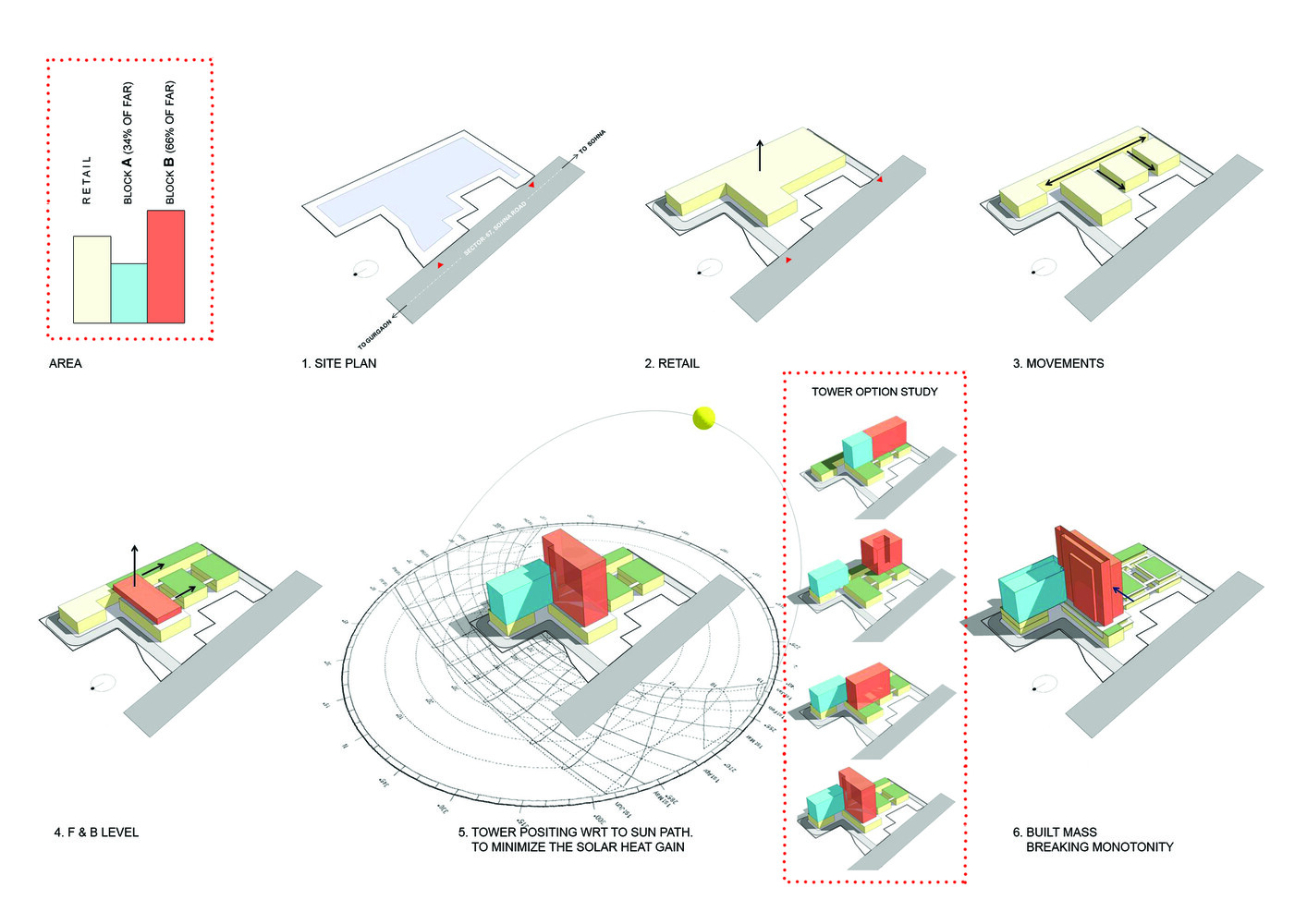
The design of facades
The design of building envelopes and skins is a significant factor that influences urban heat. Facade materials partly absorb solar energy that falls on them, partially transmit the heat into the building’s interiors and partly reflect incident heat. The use of glass as a ubiquitous facade material is a global trend that has been adopted in India as well. Its selection is based on its performance criteria and ability to create a sealed internal environment. But its highly reflective surface results in heat being reflected into its surroundings, thereby increasing ambient temperatures.
Conscious methods include limiting the indiscriminate use of glass or reflective elements on solid areas of the facade and using rain screen cladding (a form of double-wall construction where a cladding element is fixed against exterior walls).
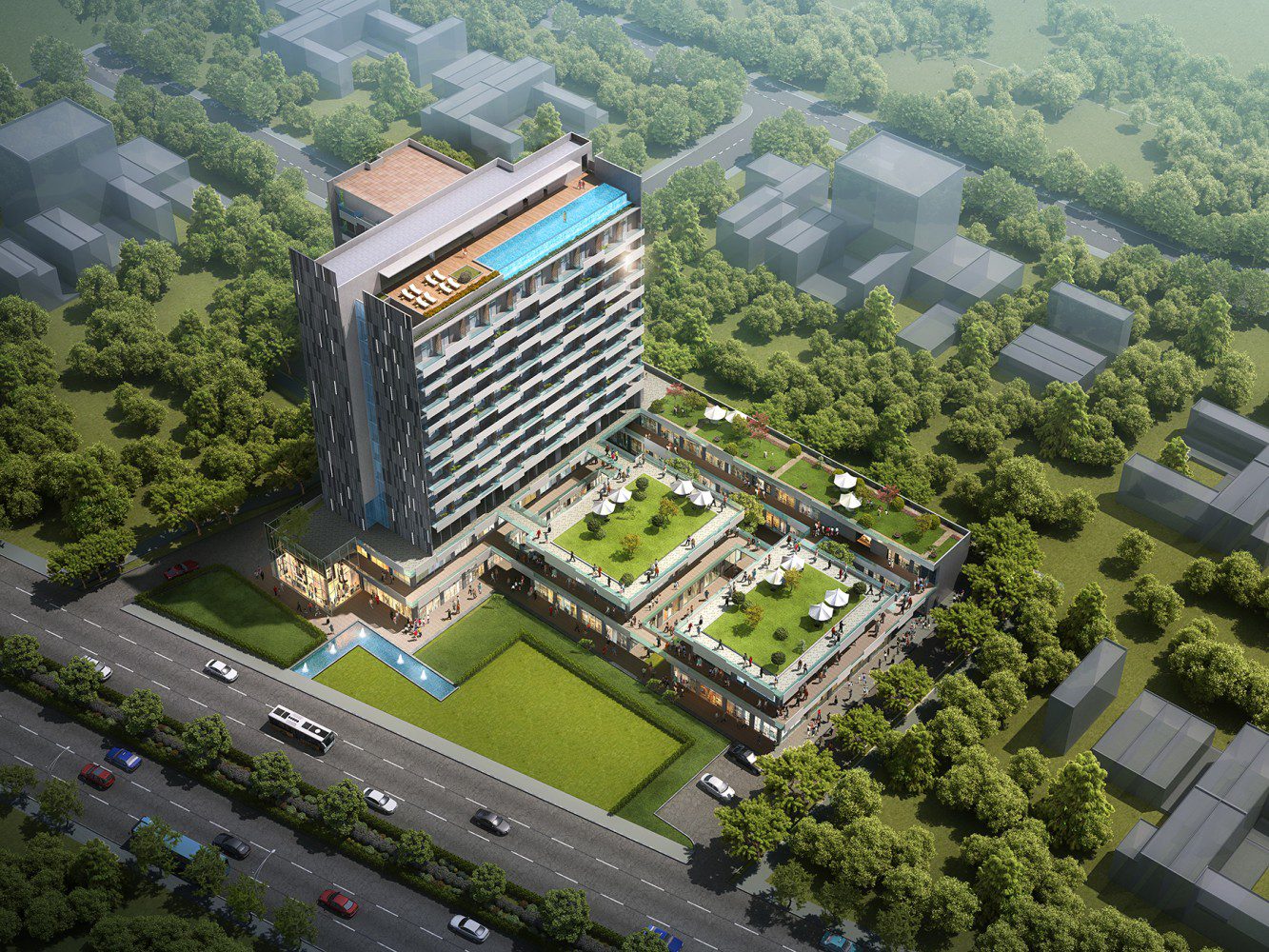
Optimised window-to-wall ratios and use of shading devices
A detailed study of sun-path and energy models leads us to optimised window-to-wall ratios, balancing the entry of daylight while keeping heat gain in check. Shading devices such as projecting slabs and chajjas, as well as louvers and screens, can create a sense of openness while keeping spaces cool.
For instance, at the Rudra Residence in Kanpur, the facade is composed of a system of curvilinear screens and green terraces that shelter the interior spaces from direct heat.
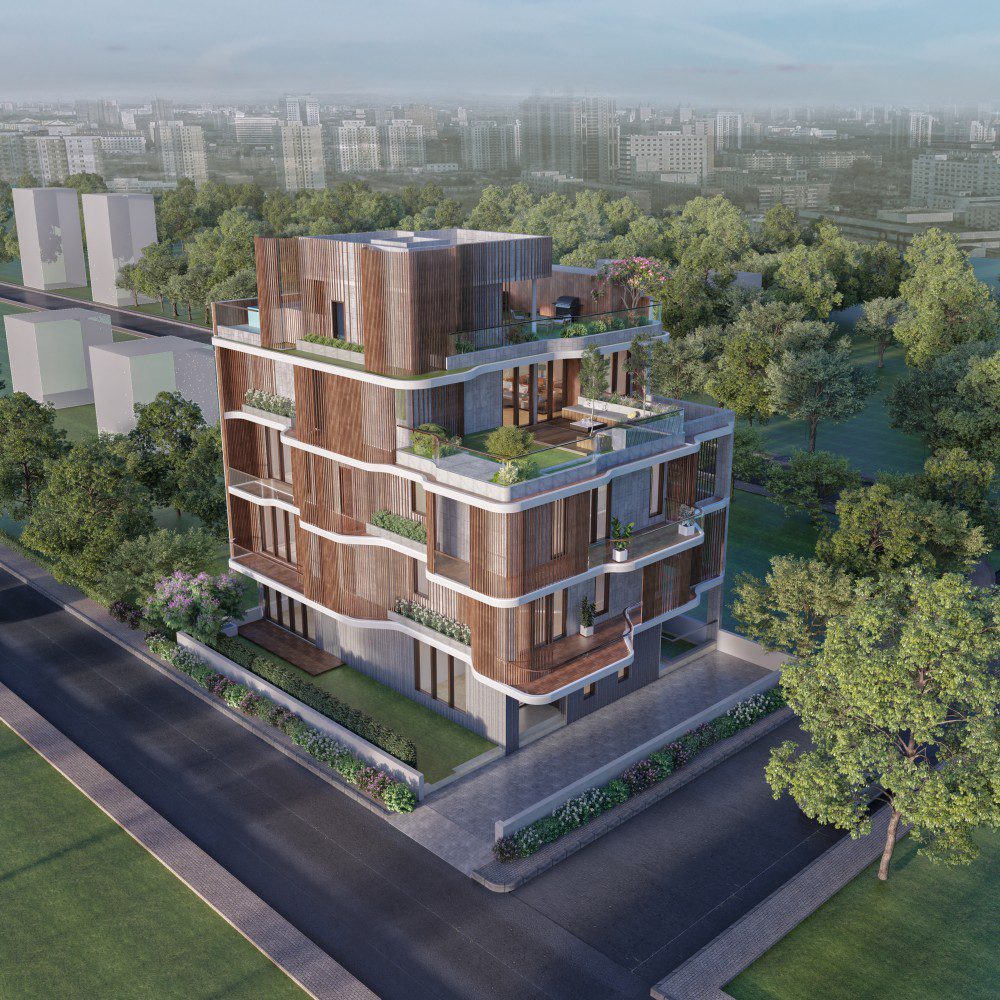
Landscaping
To ensure that our urban areas have pleasant ambient temperatures, it is crucial to integrate landscaping into our sites and surroundings. Local tree species with heights that correlate to building heights can be planned for along with green spaces, vertical gardens and water bodies. Integrating green spaces into designs not only controls heat but also creates positive environments for users.
At Centerwalk 103, a mixed-use development in Gururgram, we attempt to maximise landscaped areas within the vertical built form through green terraces that form breakout spaces and help to keep temperatures in check.
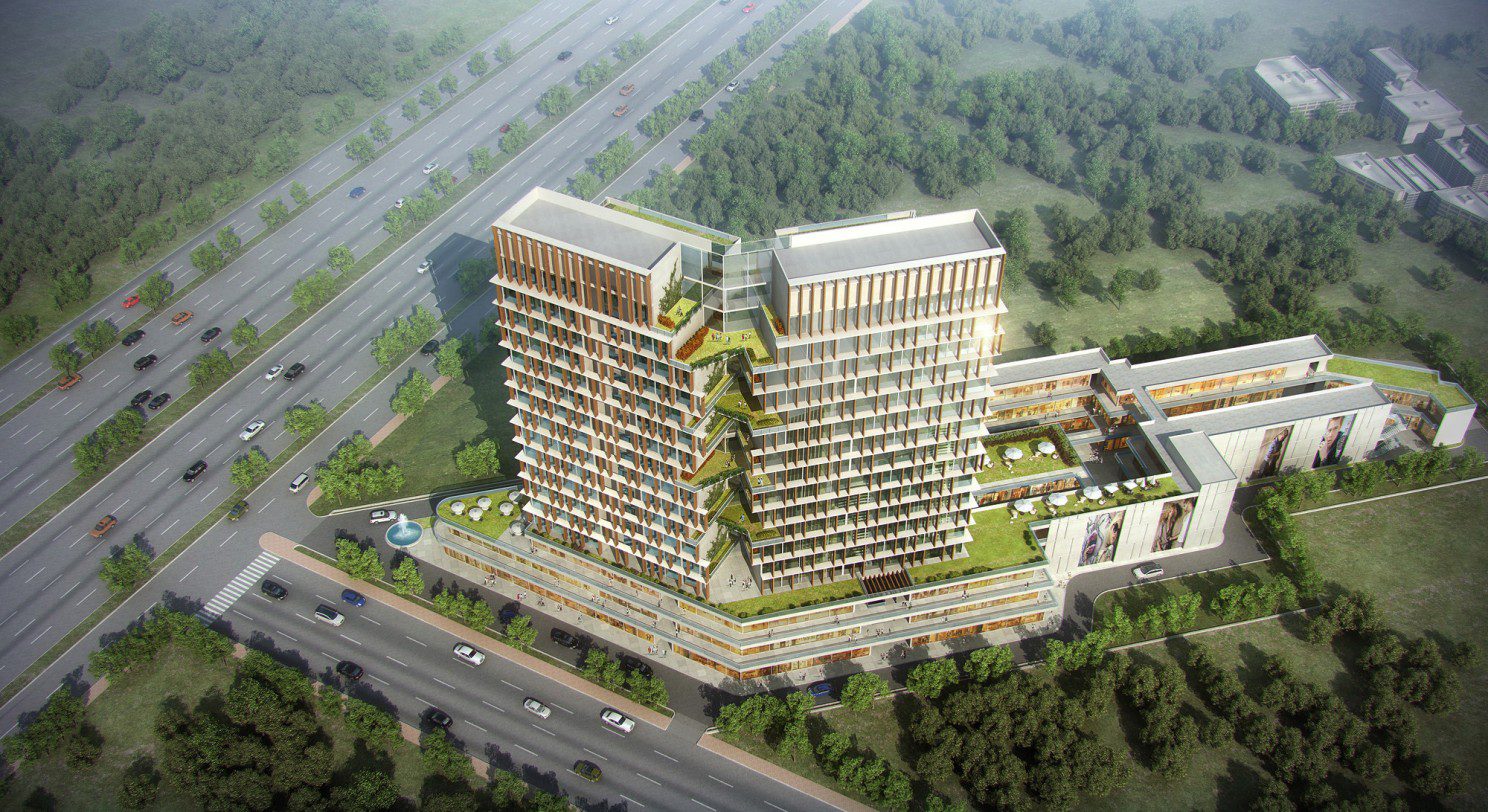
Understanding the effect that every building makes on our surroundings is the first step to building consciously. In this sense, we must see each project as an endeavour to improve our urban context and create positive environments for living.
Vijay Dahiya, Partner, team3

